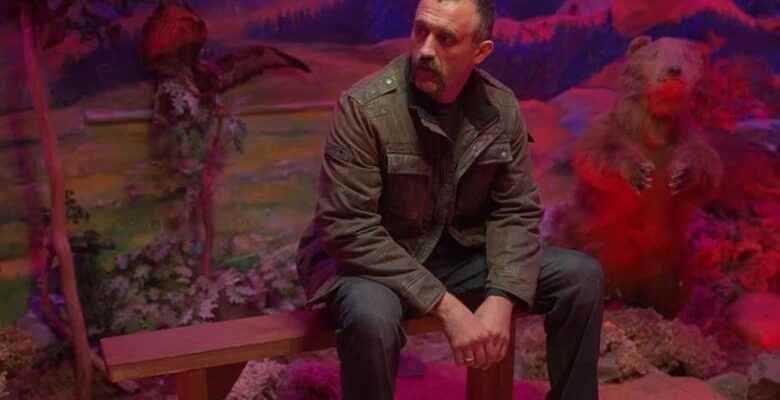(Cannes) The Cannes Film Festival had promised that Ukraine would be on everyone’s mind “during its anniversary edition, which ends on Saturday. Overview of the four films presented in different sections.
Posted yesterday at 1:51 p.m.
Pamfir
Presented at the Directors’ Fortnight, this first feature film by Dmytro Sukholytkyv-Sobchuk paints an uncompromising picture of the Chernivtsi region, on the border between Ukraine and Romania, a poor and corrupt region, but also steeped in ancient traditions .
Pamfir earns an honest living building in Romania, but has to leave his beloved wife and son behind for months. Very affected by his absences, his son commits an act of vandalism, which Pamfir must repair.
To achieve this, he returns to smuggling, which he had abandoned years earlier. A tragic spiral will close on him and his family.
The director wanted to address the issue of Ukrainian emigration and the “gulf that separates Ukraine and the European Union”. The director assures that since the start of the war, he has only left Ukraine “a few days to complete the post-production” of the film, but wishes to return there quickly, to “document” what is happening there.
Butterfly Vision

Photo taken from the Cannes Film Festival website
Butterfly Vision
On the edge of the documentary, Butterfly Visionthe first feature film by Maskym Nakonechni presented in the Official Selection, looks back on the fate of Ukrainian female soldiers captured by the Russians.
The film was shot in the Donbass region, which was, in 2014 – well before the current war – a place of clashes between the Ukrainian government, pro-Russian separatists and Russia.
It tells the story of Lilia, an aerial reconnaissance specialist who is trying to overcome the trauma of her capture and her rape by Russians. A film anchored in reality, explains its director to AFP, who recounts having covered with “colleague directors” the events in the Donbass in 2014.
While making a documentary on female soldiers, he realizes that they fear something much more than death: being raped. A strong story about the invisible scars left by the war, Maskym Nakonechni hopes that his film will reflect the lives of these women. And to send the following message: “A war never ends with the laying down of arms”.
The Natural History of Destruction

Photo taken from the Cannes Film Festival website
The Natural History of Destruction
Accustomed to the Croisette, the director of Maidan Where DonbassSergei Loznitsa, presented, in the Official Selection, The Natural History of Destructiona documentary about the destruction of German cities by the Allies during World War II.
Inspired by the work of writer WG Sebald, the film unearths impressive archival footage of these strategic bombings intended to destroy Nazi Germany’s military capabilities and undermine the morale of the German people.
An important figure in Ukrainian cinema, Sergei Loznitsa was dismissed from the Ukrainian Film Academy at the end of March for refusing to put all Russian artists in the same basket. Position that he again defended with AFP, describing as “an inhuman attitude” the plan to boycott Russian artists because of their nationality alone.
Mariupolis 2

Photo taken from the Cannes Film Festival website
Mariupolis 2
Posthumous film showing Ukraine under the bombs, Mariupolis 2 is the latest documentary by Lithuanian Mantas Kvedaravičius, killed barely two months ago in the martyred city.
Without voiceover or music, this feature film alternates between long shots showing landscapes of desolation and scenes of the daily life of inhabitants trying to survive, some refugees in the basement of a church. A rare testimony of a city that has long been the symbol of Ukrainian resistance, with the presence of soldiers entrenched in the Azovstal factory, before falling into Russian hands.
After the death of Mantas Kvedaravičius, his fiancée Hanna Bilobrova, who accompanied him, was able to bring the footage shot there and put it together. “It was important for him to show life and people in times of war rather than war,” she told AFP.
